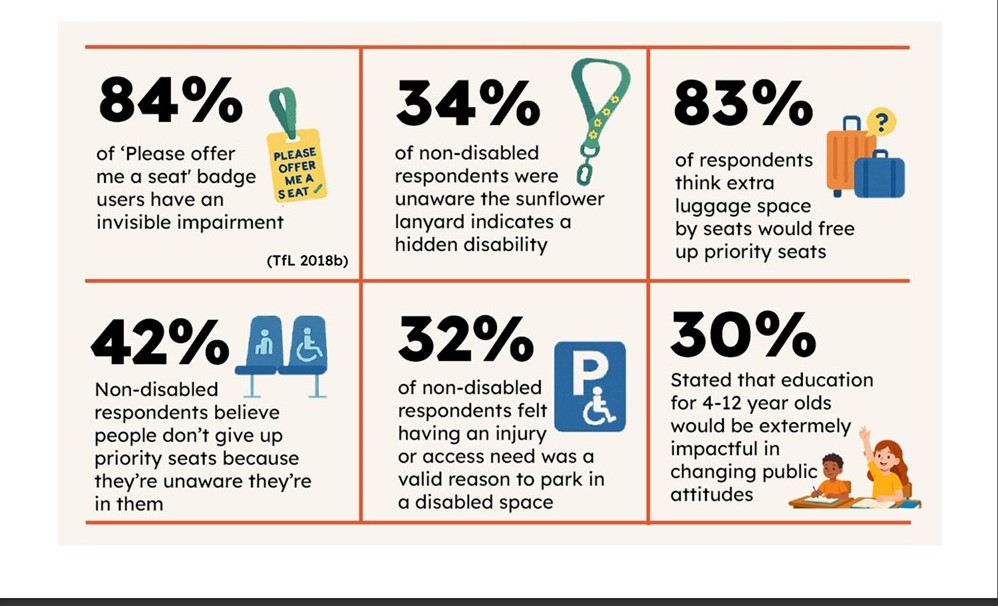Disabled people told us that the attitudes and behaviours of other people are a challenge when travelling and that they have a significant negative impact on wellbeing and independence. So we conducted this research to understand what could be done to address the negative behaviours of non-disabled people and/or encourage positive behaviours.

What did we do?
During the project, we reviewed literature and looked at case studies that tried to improve behaviours towards disabled people in a transport setting. We also engaged with both disabled people and non-disabled people to get their views on different interventions that could be done.
How did we do it and who did we do it with?
To ensure a comprehensive and inclusive study, we adopted a phased approach, allowing for multiple opportunities for input from disabled people and ensuring robust outputs through iterative testing and refinement. The study was broken down into 5 research tasks:
- Conduct desktop review of existing literature and interventions
- Run focus groups with disabled people
- Develop list of interventions to focus on and test with disabled people
- Run a survey with non-disabled people about the selected interventions
- Bring together summary of findings
What did we find out?
1: People’s characteristics and experiences with disabled people significantly impact their views on whether interventions will make an impact
2: People agree that education could have a positive impact in teaching children and young adults how to support disabled people while travelling
3: More luggage space by your seat could help free up priority spaces on public transport
4: Videos on social media are viewed as the most impactful form of messaging about the role of service animals and carers and sharing street space
5: Fines are viewed as more impactful than messaging when it comes to keeping disabled parking bays free
6: Sounds when the ramp extends are viewed as the more impactful than generic audio messages about access needs
7: Divisive views on non-disabled people wearing an ‘ask me for my seat’ badge
What next?
1: Education is a very important tool that should be higher priority.
2. Improving luggage storage options could help to decrease conflict around space on public transport.
3: Public awareness campaigns should focus on videos on social media and on public transport.
4: Give fines to enforce Blue Badge parking restrictions
5: Create better understanding and singular design behind badges and lanyards.
6: Create bold emotive signage on seats or on the floor, and audio messages to help remind people about space on public transport
7: Try combining interventions for most impact
Highlights Report
Short form Word format
Large print Word format
Insight Report
We’ve produced a Key Insights Report to be a more visual representation of the key findings in the report, and this is available as an Accessible PDF.
Designed Accessible PDF format
Full Report
Our Full Report here contains all the report findings, including appendices and references. Browse the options and access the version that works best for you.